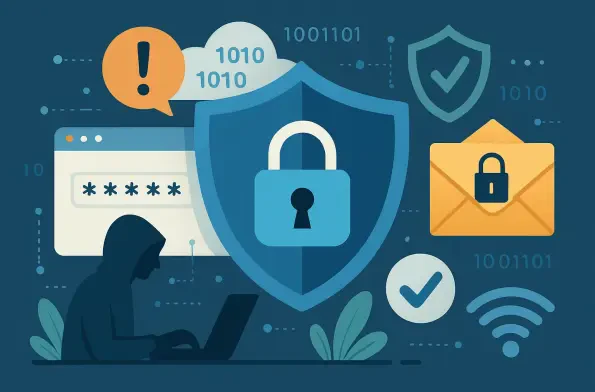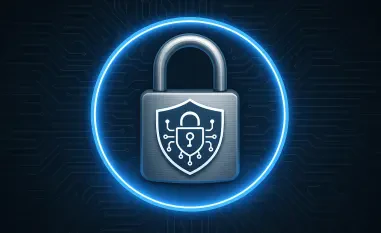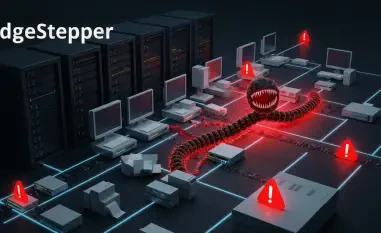In an era where digital connectivity shapes nearly every aspect of daily life, the importance of safeguarding personal and professional information cannot be overstated, especially during Cybersecurity Awareness Month. This annual initiative serves as a critical reminder that as technology evolves, so do the threats posed by cybercriminals who target individuals, businesses, and even government entities with increasing sophistication. From phishing scams that trick users into revealing sensitive data to ransomware attacks that lock access to vital systems, the potential for financial loss and personal harm is ever-present. The rise in online data storage means that a single breach can expose millions of records, leading to devastating consequences. This month-long focus aims to educate and empower everyone to adopt stronger security practices and stay vigilant against emerging risks, ensuring a safer digital environment for all.
1. Understanding the Growing Threat Landscape
The digital world is expanding at an unprecedented rate, and with it, the scope and complexity of cyber threats continue to escalate, posing significant challenges to individuals and organizations alike. Cybersecurity Awareness Month highlights how cybercriminals exploit vulnerabilities in online systems to steal personal information such as financial details, health records, and other sensitive data. Identity theft, for instance, can ruin credit scores and drain bank accounts, while ransomware can cripple businesses by locking critical files until a payment is made. The sheer volume of data stored online amplifies these risks, as hackers target poorly secured networks to access millions of records in one strike. This reality underscores the urgent need for heightened awareness and proactive measures to combat these threats, ensuring that digital advancements do not come at the cost of security or privacy for users across all sectors.
Another critical aspect of the evolving threat landscape is the role of emerging technologies, which often outpace the development of adequate safeguards, leaving gaps for exploitation. Artificial Intelligence (AI), while offering immense potential for innovation, also introduces new risks as malicious actors leverage it to create more convincing phishing emails or deepfake content to deceive unsuspecting victims. The increasing reliance on cloud storage and remote work environments further expands the attack surface, making it easier for hackers to infiltrate systems through unsecured connections. Reports from agencies like the Cybersecurity and Infrastructure Security Agency (CISA) indicate that phishing remains a primary entry point for many cyberattacks, emphasizing the need for education on recognizing suspicious communications. Addressing these challenges requires not only individual vigilance but also systemic efforts to strengthen defenses against sophisticated threats.
2. Practical Steps to Enhance Digital Security
Taking actionable steps to protect online information is a cornerstone of Cybersecurity Awareness Month, and adopting simple yet effective practices can significantly reduce the risk of falling victim to cybercrime. One fundamental measure is the use of strong, unique passwords for every account, ideally generated by a trusted password manager to ensure complexity and randomness. Avoiding easily guessable details like birthdays or common phrases is essential, as these are often the first targets for hackers. Additionally, enabling Multi-Factor Authentication (MFA) adds an extra layer of security by requiring a second form of verification, such as a code sent to a mobile device, making unauthorized access far more difficult. These basic steps can serve as a robust first line of defense against a wide array of cyber threats, empowering users to take control of their digital safety.
Beyond passwords and authentication, mindful online behavior plays a vital role in maintaining security and preventing costly mistakes in an increasingly connected world. Thinking twice before clicking on links or downloading attachments from unfamiliar emails is crucial, as phishing attempts remain a leading cause of data breaches. When shopping online, using credit cards instead of debit cards offers better fraud protection, and regularly monitoring account statements can help detect unauthorized transactions early. Ensuring that devices are kept up to date with the latest software patches is equally important, as updates often address newly discovered vulnerabilities that cybercriminals exploit. Reporting suspicious emails to authorities like CISA at report@cisa.gov also contributes to broader efforts to track and mitigate threats, reinforcing the collective responsibility to create a safer digital space for everyone.
3. The Role of Policy and Oversight in Cybersecurity
As cyber threats become more intricate, the role of policy and oversight in shaping a secure digital future has gained prominence, with initiatives during Cybersecurity Awareness Month shedding light on these efforts. Government bodies and task forces are increasingly focused on understanding and addressing the implications of technologies like AI, which can be both a tool for progress and a potential risk if misused. Specialized committees are tasked with monitoring the development of such technologies, ensuring they align with the public’s welfare and interests. This involves studying how AI can enhance state operations while identifying dangers such as data manipulation or privacy breaches. Strong oversight ensures that technological advancements are matched with regulations that protect citizens from emerging cyber risks.
Equally important is the collaboration between federal agencies and state governments to build resilient cybersecurity frameworks that can adapt to new challenges over time. Agencies like CISA play a pivotal role by providing guidelines on cyber hygiene and encouraging the public to adopt best practices for online safety. Legislative efforts also aim to hold organizations accountable for securing sensitive data, pushing for stricter compliance with security standards. From 2025 onward, there will likely be an even greater emphasis on creating policies that address the rapid evolution of cyber threats, ensuring that both individuals and institutions are equipped to handle risks. This systemic approach complements individual actions, creating a multi-layered defense strategy that is essential for long-term digital security across communities.
4. Building a Safer Tomorrow Through Awareness
Reflecting on the efforts during Cybersecurity Awareness Month, it becomes evident that education and proactive measures are key to countering the sophisticated cyber threats that emerge over time. The emphasis on understanding risks like phishing and ransomware provides a foundation for individuals to protect their digital assets effectively. Campaigns led by agencies such as CISA play a crucial role in disseminating actionable advice, from using strong passwords to reporting suspicious activities, which helps countless users avoid potential breaches. These initiatives underscore the importance of staying informed about evolving dangers and adopting habits that prioritize security in every online interaction, fostering a culture of vigilance that benefits both personal and professional spheres.
Looking ahead, the focus should shift toward sustaining this momentum by integrating cybersecurity education into everyday routines and advocating for stronger protective measures at all levels. Encouraging regular updates to security protocols, supporting legislative efforts for robust data protection laws, and fostering public-private partnerships can pave the way for a more secure digital landscape. As technology continues to advance, staying one step ahead of cybercriminals will require ongoing commitment to learning and adaptation. By building on the awareness raised during this dedicated month, society can work collectively to ensure that the benefits of a connected world are not overshadowed by preventable risks, securing a safer tomorrow for all.













